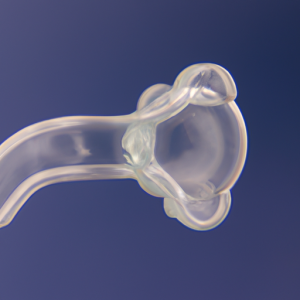Orthodontics is a branch of dentistry that focuses on the diagnosis, treatment, and prevention of dental and facial irregularities. It involves the use of various techniques and tools to help correct misaligned teeth and jaws, ultimately improving a person’s oral health and overall appearance. In this comprehensive guide, we will delve into the world of orthodontics, exploring the different aspects of diagnosis, treatment, symptoms, causes, and more. From understanding the basics of orthodontics to recognizing the signs of common orthodontic conditions, this article aims to provide you with valuable insights into the world of orthodontics. So, whether you’re considering orthodontic treatment for yourself or a loved one, or simply curious about the field, join us as we navigate through the intricacies of orthodontics.
1. "Understanding Orthodontics: A Comprehensive Guide to Diagnosis and Treatment"
Orthodontics is a specialized branch of dentistry that focuses on the diagnosis, prevention, and treatment of dental and facial irregularities. It aims to correct misaligned teeth and jaws, ensuring proper oral function and improving overall aesthetics. Orthodontic treatment can have a significant impact on a person’s confidence, self-esteem, and oral health.
Diagnosis is an essential step in orthodontic treatment. Orthodontists are highly trained professionals who assess and diagnose patients by thoroughly examining their teeth, jaws, and facial structure. This process involves taking X-rays, photographs, and dental impressions to gain a comprehensive understanding of the patient’s condition. By analyzing these diagnostic tools, orthodontists can identify any malocclusions, or bite problems, and determine the most suitable treatment plan.
Orthodontic treatment can address a wide range of dental issues, including crowded or crooked teeth, gaps between teeth, overbites, underbites, crossbites, and open bites. These problems can not only affect the appearance of the smile but also impact oral health and overall well-being. For instance, misaligned teeth can be challenging to clean properly, leading to an increased risk of tooth decay, gum disease, and bad breath. Additionally, a misaligned bite can cause jaw pain, headaches, difficulty in chewing, and speech problems.
The causes of orthodontic problems can vary. In some cases, genetic factors play a significant role, with certain dental irregularities being inherited from parents. Other causes include oral habits like thumb sucking, tongue thrusting, or mouth breathing, which can affect the proper growth and alignment of teeth and jaws. Additionally, early loss of primary teeth, dental trauma, and poor nutrition during childhood can also contribute to orthodontic issues.
Orthodontic treatment options have evolved significantly over the years, providing patients with a wide range of choices
2. "Recognizing the Signs: Common Symptoms and Causes of Orthodontic Conditions"
Orthodontic conditions refer to any irregularities or abnormalities in the alignment of the teeth and jaws. It is crucial to recognize the signs and symptoms of these conditions early on, as timely intervention can prevent further complications and ensure proper dental health.
One of the most common symptoms of orthodontic conditions is crooked or misaligned teeth. When the teeth do not align correctly, it can lead to difficulties in biting, chewing, and even speaking. Additionally, overcrowding or gaps between teeth may also be indicative of orthodontic problems.
Another symptom to watch out for is an improper bite. There are different types of malocclusions, including overbite, underbite, crossbite, and open bite. An overbite occurs when the upper front teeth excessively overlap the lower teeth, while an underbite is characterized by the lower teeth protruding further than the upper teeth when biting. A crossbite refers to a misalignment of the upper and lower jaws, causing the teeth to overlap in an abnormal way. Lastly, an open bite is when the upper and lower front teeth do not meet when the mouth is closed. These bite issues can lead to difficulties in eating, speaking, and may even cause facial pain or temporomandibular joint (TMJ) disorders.
The causes of orthodontic conditions can vary. In many cases, these conditions are hereditary, meaning they are passed down through generations. If a parent has had orthodontic issues, there is a higher likelihood of their child experiencing similar problems. Other causes include habits such as thumb sucking, tongue thrusting, mouth breathing, and prolonged pacifier or bottle use. These habits can affect the development of the teeth and jaws, leading to misalignments.
Furthermore, oral trauma, such as injury to the face or mouth, can also contribute to orthodontic conditions. Accidents or
3. "Navigating Orthodontic Treatment: From Braces to Aligners and Beyond"
Orthodontic treatment has come a long way over the years, offering patients a variety of options to achieve a healthy and beautiful smile. From traditional braces to aligners and beyond, navigating through the different treatment options can be overwhelming. However, understanding the various techniques available can help individuals make informed decisions about their orthodontic treatment.
Traditional braces have been the go-to option for many years. Consisting of metal brackets and wires, braces work by applying gentle pressure to gradually move teeth into their desired positions. While they may not be the most aesthetically pleasing option, braces are highly effective and can correct a wide range of dental issues, including overcrowding, misalignment, and bite problems.
For those seeking a more discreet and flexible treatment option, aligners have gained significant popularity. These transparent, removable trays are custom-made to fit snugly over the teeth and gradually move them into alignment. Aligners, such as Invisalign, offer a more cosmetically appealing alternative to braces, as they are virtually invisible and can be easily removed for eating, brushing, and flossing. This makes them a convenient choice for individuals with active lifestyles or those who prefer a more discreet orthodontic treatment.
Another emerging option in orthodontics is lingual braces. Unlike traditional braces that are affixed to the front surface of the teeth, lingual braces are placed on the backside, making them virtually invisible from the outside. Lingual braces offer the benefits of traditional braces while providing a more aesthetically pleasing option for individuals who wish to keep their orthodontic treatment discreet.
In recent years, there has been a surge in the popularity of accelerated orthodontics. This technique aims to expedite the tooth movement process, reducing the overall treatment duration. Accelerated orthodontics may involve the use of high-frequency vibration devices or minor surgical procedures to

